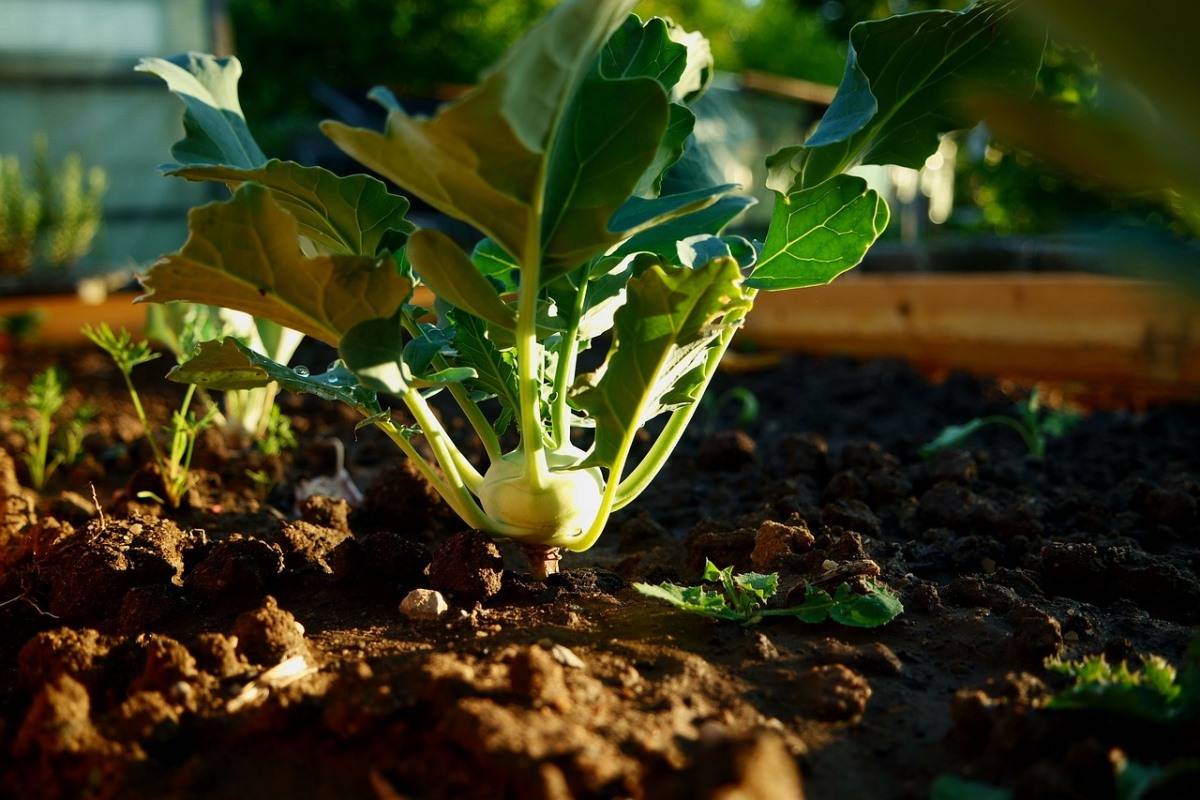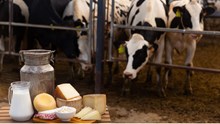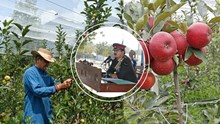
Do you want to cultivate your own Kohlrabi plant, but are not sure about how to plant and nurture it? All you need to do is follow the instructions in this article and grow a flawless Kohlrabi plant. We'll also go over some frequently asked questions about growing Kohlrabi.
Kohlrabi is a low, stout type of wild cabbage that grows biennially. Cabbage, broccoli, cauliflower, Brussels sprouts, and Gai Lan are all members of the same species as the German turnip. Cooked or raw, it's delectable.
Kohlrabi is a hardy biennial that is grown in the United States as an annual. Kohlrabi is grown for its swollen base, which is the stem of the plant. Kohlrabi is a good choice for gardeners with shallow soil since its base is shaped like a globe and rises above the ground.
There are white, light green, and purple skin variants. It is possible to consume both the globe base and the leaves.
Sow Kohlrabi seed 3 to 4 weeks before the final average frost date in the spring. Kohlrabi grows best in temperatures ranging from 4.4 to 23.9 degrees Celsius. Kohlrabi takes 45-60 days to fully develop. In mild winter climates, sow Kohlrabi in late summer for a winter crop. In the early fall, kohlrabi can withstand a frost.
Kohlrabi should be cultivated in a bright light. Kohlrabi should be cultivated on soil that is well-worked, well-drained, and rich in organic matter. Work 2 inches (5 cm) of old compost into the soil before you begin planting. Kohlrabi thrives in soil with a pH range of 5.5 to 6.8. Kohlrabi should be side dressed with old compost in the middle of the season.
In mild winter regions, kohlrabi may be cultivated all year. The optimum time to sow Kohlrabi for the winter crop is late summer. In the early fall, kohlrabi can withstand a frost. In chilly winter regions, sow Kohlrabi in the summer for an early fall crop.
Some frequently asked questions about Kohlrabi gardening:
What is the ideal time to grow Kohlrabi?
Kohlrabi prefers rich and full light and well- drained soil. In the North, for a spring or fall harvest you can grow this cool season plant, while you can plant it for a winter harvest in South. Grow seeds outside when the risk of a heavy frost has passed for a spring harvest, sow around midsummer for an autumn crop or in the fall for a winter crop.
Kohlrabi requires full sun?
Per day, Kohlrabi requires almost 6 hours of direct sunlight but more is preferred. It requires well-drained, fertile, moist soil with a good amount of organic matter. Clubroot disease is inhibited by a soil pH range of 6.5-6.8.
Can Kohlrabi be grown in Containers?
Kohlrabi is a best vegetable to grow in a container. Choose a container which is big enough for about 16 inches in diameter and 16 inches deep and fill it with a decent mix of potting soil which includes good amount of nutrient rich compost.
What is the ideal way to fertilize Kohlrabi?
It isn’t a particularly heavy feeder. In most gardens, fertilizing with 3-4 quarts per 100 sq ft. of a decent organic all-purpose 5-5-5 fertilizer 2 weeks before transplanting or sowing will see a plant through to harvest.
What is the ideal way to grow Kohlrabi seeds?
Kohlrabi seeds should be placed in rows about 2 inches apart and tapered when seedlings develop, to around 6 cm apart. Rows should be separated by ten to twelve inches.
How long does it take for Kohlrabi to develop from seed?
Kohlrabi seed should be planted 14 inches deep according to the spacing requirements. Plants should be 9 to 12 inches apart.
Time to germinate: 3 to 20 days.
Kohlrabi does not grow well on sandy soil.
How can you grow Kohlrabi the most efficiently?
Kohlrabi seed propagation begins with a fertile soil base. Sow the seeds 14 inches deep in 2 foot long rows when starting Kohlrabi from seed. Seedlings will emerge in 4 to 7 days and be spaced 4 to 6 inches apart in a row.
What's the best way to keep Kohlrabi safe?
Irrigate the plants if the weather is dry, as a lack of water will result in woody stems. They necessitate more water than the majority of other plants. Mulch surrounding them will help retain moisture.















